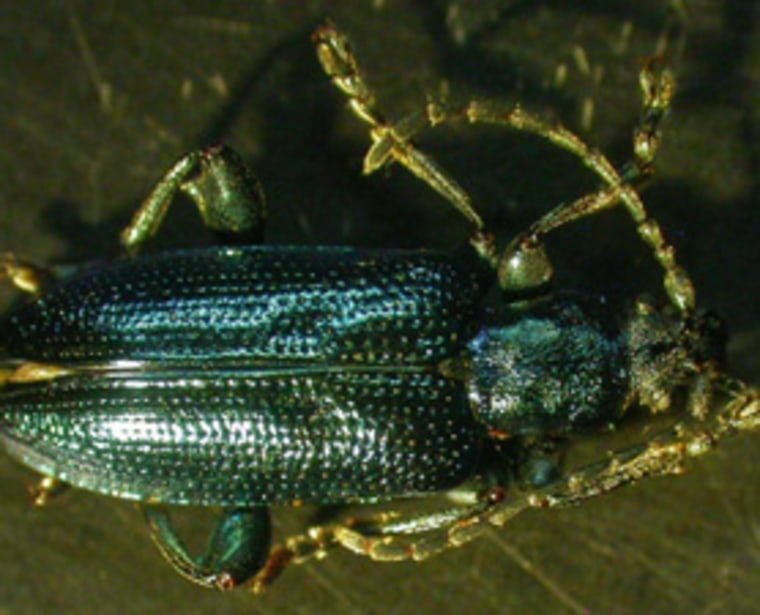Ancient history often appears black and white, since artifacts, fossils and other remains usually lose their color over time. But researchers have just found an iridescent blue-green bug that looks like it did 600,000 years ago when it was alive.
The leaf beetle, Plateumaris sp., is one of just two such advanced age insect fossils that retain substantial original color molecules. Another beetle, dating to 50 million years ago, also appears to have sported the same hues, but the color preservation is better in this middle Pleistocene specimen, project leader Gengo Tanaka told Discovery News.
The male bug, along with other "exceptionally well-preserved insect fossils," was recently excavated from the Hirabaru Formation in Kyushu, Japan. The male's flash was for females since its "structural color would be used in mating displays," said Tanaka, a researcher at Japan's Gunma Museum of Natural History.
He added that its "color changed from green to dark blue by changing the angle of incident light."
Tanaka and his team removed fragments of the fossil and examined them under high magnification. The researchers also performed tests to determine the specimen's chemical composition. The tests revealed original macromolecules, such as chitin (a tough protective substance), protein and amino acids.
The findings are published in the latest issue of the journal Geology.
The scientists can even reconstruct the last days of the colorful bug's life because it was found near a diving beetle, mud and plant remains. This "indicates that the leaf beetle lived near a pond or lakeside where reedy grasses flourished," Tanaka said.
Analysis of sediments at the site suggests the bugs were caught in a "volcanic debris flow in their habitats near the lake and were buried with many diatoms (algae) at the end of the sedimentation of the flow," the researchers wrote.
The event entombed the insects in a calm, slightly acidic and watery environment that preserved them, as Tanaka said, "like pickles in vinegar."
Andrew Parker, research leader of the Department of Zoology at London's Natural History Museum, led the team that found the 50-million-year-old beetle that still had some original organic color material left. It was excavated in Germany.
Parker told Discovery News that "these fossils are important because, rather than simply predicting that relatives of animals today were similarly colored, we can prove it."
Parker, who authored the book "In the Blink of an Eye," has extensively studied color and its connection to the emergence of vision in the animal kingdom.
"Since vision evolved, everything has been fully adapted to the presence of a retina, adapted in terms of their color, shape and behavior," he said. "Prior to the first highly mobile predator with vision, the rules would have been much different, and indeed we know from fossils that animal forms and ecology were much different."
Although scientists cannot yet completely reconstruct what life was like before vision emerged, Parker said that happened during pre-Cambrian periods.
Around 530 million years ago, an event known as the Cambrian explosion occurred, when most major groups of animals rapidly appeared, exhibiting colors that were at least as striking as those seen today. Three recent studies on dinosaurs, for example, reveal that multicolor, striped and spotted beasts populated the Dinosaur Age.
